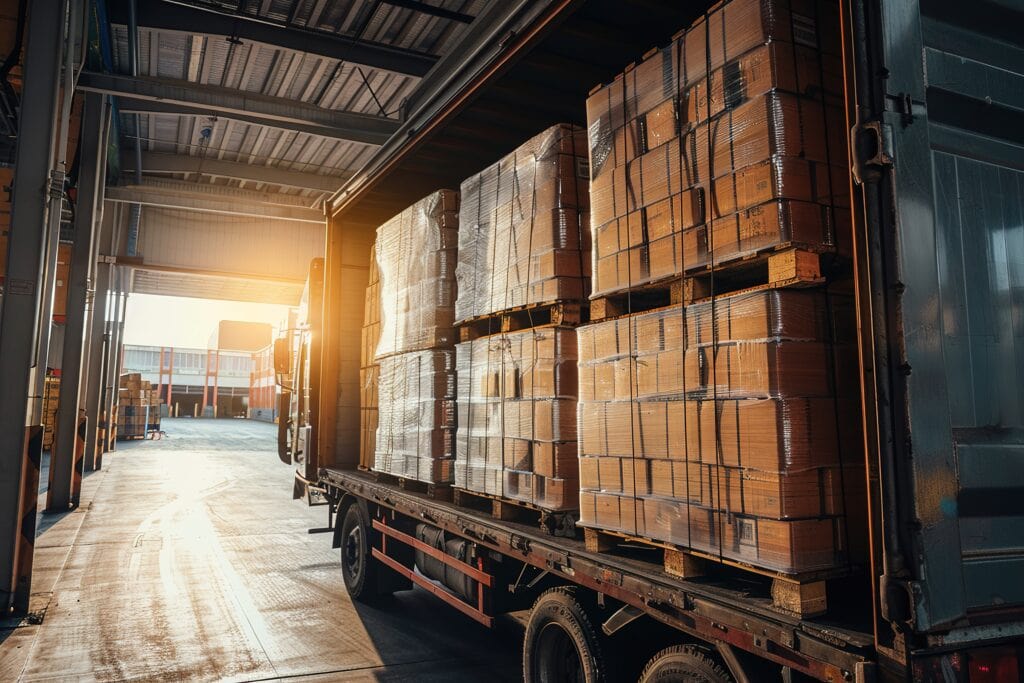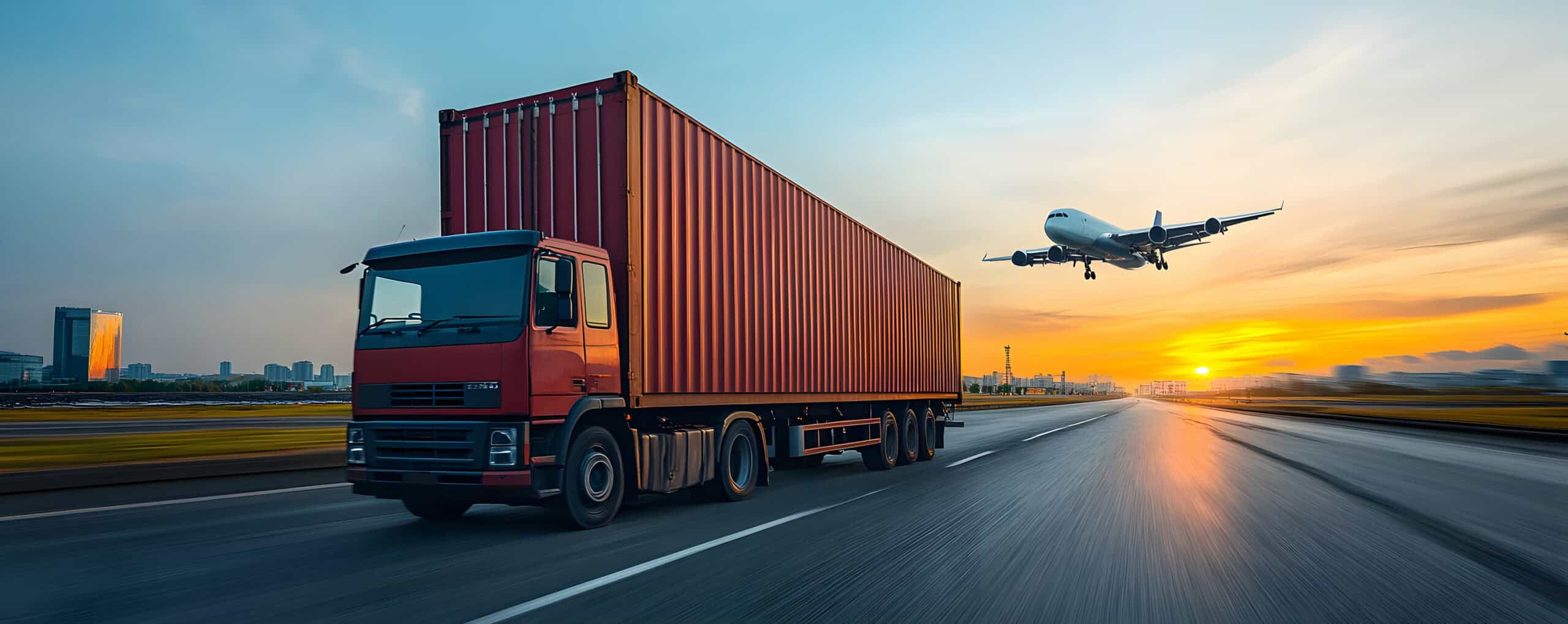Navigating the terminology of the freight and logistics industry can feel overwhelming with all the technical terms and acronyms. We often get asked by our clients to explain different freight terms and acronyms that they have heard.
As a result, we’ve put together this guide that outlines the most commonly used terminology in both land transport and international freight, helping you decode the logistics lingo.

Land Transport Terminology
- LTL (Less Than Truckload):
Used when the shipment does not fill an entire truck. Multiple customers’ freight shares the same truck, making it cost-effective but sometimes slower due to multiple delivery points.
- FTL (Full Truckload):
A single shipment that fills up the entire truck, either by space or weight. Ideal for larger shipments and often faster, since the truck goes directly from pickup to destination.
- Pallet:
A flat transport structure (usually wooden or plastic) that supports goods for handling and storage. Palletised freight allows for easier loading/unloading with forklifts.
- Carton / Case:
Boxes or packaging used to group and protect products within a pallet or container.
- Consignment:
A shipment or delivery of goods, often identified with a consignment note or tracking ID.
- Linehaul:
The movement of freight over long distances—typically the inter-city or inter-state segment of the journey between hubs or depots.
- Hub and Spoke:
A model where goods are transported from multiple origins to a central hub and then distributed to final destinations.
- Tail Lift Delivery:
A delivery method using trucks equipped with hydraulic lifts, allowing heavy items to be raised or lowered from the truck—especially useful when no forklift is available.
- POD (Proof of Delivery):
A signed confirmation from the receiver that goods have been delivered as expected.
- Cross-Docking:
A practice where goods are unloaded from one inbound vehicle and loaded directly onto outbound vehicles with minimal storage time, speeding up the supply chain.
- Backhaul:
The return trip of a transport vehicle, often used to pick up new freight to reduce empty miles and improve efficiency.
- Deadhead:
A truck travelling without a load, typically returning from a delivery without a backhaul opportunity—inefficient and costly.

International Freight Terminology
- FCL (Full Container Load):
A shipment that fills an entire shipping container (20ft or 40ft). Even if it’s not physically full, a shipper can pay for exclusive use of the container.
- LCL (Less than Container Load):
When a shipment doesn’t fill a container and is consolidated with other shippers’ cargo. It’s more cost-effective for smaller volumes but may involve longer transit times and more handling.
- Incoterms (International Commercial Terms):
Standard terms defined by the International Chamber of Commerce (ICC) that outline the responsibilities of buyers and sellers in international transactions. Key examples include:
-
- FOB (Free on Board): Seller handles transport to port and loading onto the vessel; buyer takes over from there.
- CIF (Cost, Insurance, and Freight): Seller pays for shipping and insurance up to the port of destination.
- EXW (Ex Works): Buyer is responsible for the entire journey from the seller’s premises.
- DAP (Delivered at Place): Seller delivers to the buyer’s location, not including import customs clearance.
- DDP (Delivered Duty Paid): Seller is responsible for all costs, including duties and taxes, right to the buyer’s door.
- Freight Forwarder:
An agent who organises the movement of goods on behalf of the shipper. They arrange transport, documentation, customs clearance, and sometimes warehousing.
- Customs Broker:
A licensed specialist who handles customs documentation and clearance, ensuring that goods comply with import/export laws.
- Bill of Lading (BOL or B/L):
A document issued by the carrier that serves as a receipt of cargo, a contract of carriage, and a document of title. In sea freight, this is critical for taking possession of the goods.
- Commercial Invoice:
A document provided by the seller to the buyer (and customs authorities), detailing the goods, their value, and trade terms.
- Packing List:
A document listing all items in a shipment, including quantities, weights, and dimensions. It helps customs officials and recipients verify cargo contents.
- HS Code (Harmonized System Code):
An internationally standardised system used to classify goods for customs and tariffs. Correct use is essential to avoid fines or delays.
- Containerisation:
The process of transporting goods using standardised containers (typically 20ft or 40ft). Containers allow for multimodal transport—by ship, train, or truck—without unpacking.
- TEU (Twenty-Foot Equivalent Unit):
A standard measurement unit for containers. One 20ft container = 1 TEU, while a 40ft container = 2 TEUs.
- Demurrage:
Fees charged when containers stay at the port beyond the allowed free days.
- Detention:
Fees incurred when the container is held outside the port (e.g., at the customer’s warehouse) longer than the allowed time.
- Freight Collect / Freight Prepaid:
Terms that indicate whether the buyer (collect) or seller (prepaid) is responsible for the cost of freight.
- Carrier:
The shipping line, airline, trucking company, or railway that physically transports the goods.
- ETA / ETD (Estimated Time of Arrival / Departure):
Common terms used to estimate the movement of freight at various points along the supply chain.
- Air Waybill (AWB):
A non-negotiable document used in air freight. It serves as a contract between the shipper and airline.
- Ocean Freight:
Transport of goods by sea, typically in containers, and the most common method for international bulk freight.
- Inland Freight:
Transport from the origin warehouse to port or from port to final destination—usually via truck or rail.
- Freight Consolidation:
Combining multiple small shipments into one larger container to reduce cost and improve shipping efficiency.
Need help with warehousing?
Partner with warenous to transform your warehouse operations. With deep warehousing expertise, we can support your business to achieve cost savings and efficiency gains from optimising your own warehouse or outsourcing to a 3PL warehouse.
Contact us today for a free consultation.





